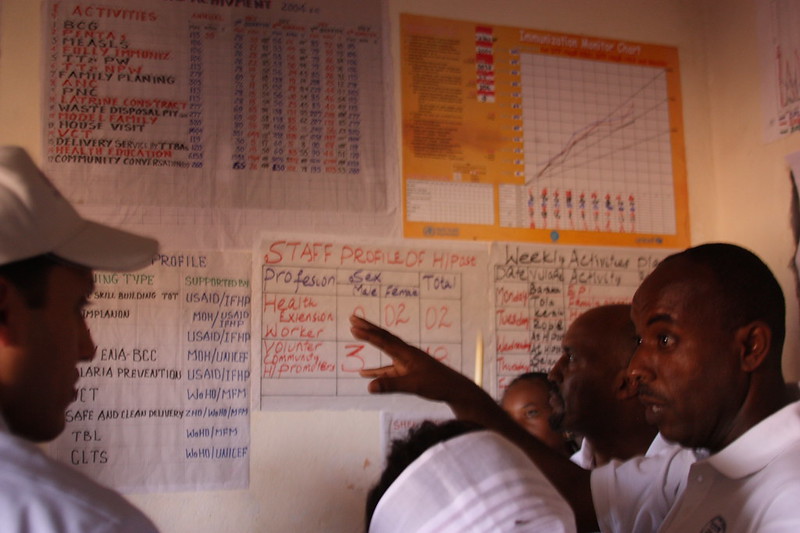The recent SDG summit and the UN General Assembly celebrated the global halving of childhood deaths from over 12 million in 1990 to around 6 million per year in 2015, a major accomplishment. However, just as evident: much work remains. The proportion of mothers who don’t survive childbirth is 14 times higher in developing regions than in developed ones. And 17,000 children still die every day.
Several senators have identified a way they think the US government can do more to ease this burden. Earlier this year, Senators Susan Collins (R-ME) and Chris Coons (D-DE) introduced the Reach Every Mother and Child Act of 2015 (S. 1911), or Reach Act, which aims to accelerate progress toward ending preventable maternal and child deaths by 2035. The bill has tallied additional supporters since then, including Senators Rubio (R-FL), Murray (D-WA), Kirk (R-IL) and Shaheen (D-NH). Much of the bipartisan bill is to be lauded—from its focus on evidence-based interventions to its call for results-based financing schemes.
Below are a few ways to ensure this legislation, if passed, delivers real impact:
Keep the focus on evidence-based interventions and outcome-based targets, but ensure targets are measurable, appropriate, and can be regularly tracked and reported. Great to see US lawmakers hone in on the need for rigorous evidence to inform decisions about what programs to invest in. It’s something we have encouraged time and again (and is a core lesson of our forthcoming edition of Millions Saved!).
However, to make such informed decisions, we need accurate and timely data. Measuring based on outputs and outcomes only works if the data can be collected and analyzed regularly at both the country level and among US agencies involved with the projects. Too often, countries lack the capacity to accurately capture and analyze vital statistics like births and deaths—a major issue when we’re trying to determine reductions in mortality rates and allocate resources where they’re needed most. And, in the United States, while PEPFAR has come a long way to make its data more transparent, not all US agencies are on board yet. Legislation like this, which calls for greater transparency, could help change that.
Push for the use of appropriate innovative financing, but bring in new investments, too. We were particularly pleased to see that the bill included the use of development impact bonds and other results-based financing mechanisms in the maternal and child health space. But as our colleague Owen Barder is quick to point out, DIBs don’t necessarily bring new money to the table—something we’d like to see the US government do. USAID contributed a meagre $50 million to the World Bank’s Global Financing Facility (GFF) back in July. It appears the Reach Act would create room for more substantial funding from the United States, although neither the GFF nor additional funds from the US government are mentioned explicitly in the legislation.
Create accountability at USAID for a new maternal and child health strategy, but ensure the new Maternal and Child Survival Coordinator has the authority to actually coordinate dollars across agencies. The CDC, PEPFAR, PMI, the NIH, and USAID, all contribute to the sum of money used to address the health conditions of women and children. Given this extremely fractured approach, what’s needed is a Coordinator who has authority to ensure these investments are working in tandem, utilizing each agency’s comparative advantages, and putting forward a unified front. Further, the Coordinator should have the mandate and authority to collaborate with multilateral organizations like the UN and World Bank, which are also trying to reduce maternal and child deaths globally.
Even in our enthusiasm for the Reach Act, we would note a reservation: legislation like this can push US global health strategies further down the path of silos and earmarked funding that has proven dysfunctional (see the failed Global Health Initiative, for example). While the bill’s establishment of a Development Impact Partnership sounds great in theory, creating a new group that only oversees the financing for USAID’s maternal and child health agenda could simply deepen the chasm between various agencies’ budgets and strategies.
In the long run, we’d hope for the establishment of a White House global health coordinator with the mandate, political support, and budget authority to enforce interagency collaboration and work closely with multilaterals across all US global health priorities—not just AIDS on its own, MCH on its own, or Ebola on its own. This would help ensure the US presents a unified strategy across its global health portfolio and designate a specific representative within the US government who is responsible for ensuring US investments deliver impact.
From the World Bank’s GFF to the UN’s new Global Strategy for Women’s, Children’s and Adolescent’s Health, international institutions and governments are heeding the call to do more for the health of women and children. And within these integrated approaches, the US has an opportunity to help in a renewed way. We hope to see this momentum continue as countries, international agencies, and US senators on both sides of the aisle seek to build on the incredible progress made so far.
Disclaimer
CGD blog posts reflect the views of the authors, drawing on prior research and experience in their areas of expertise. CGD is a nonpartisan, independent organization and does not take institutional positions.





